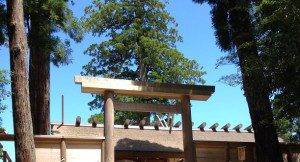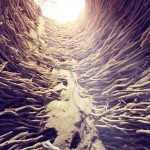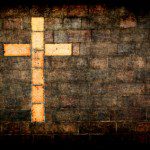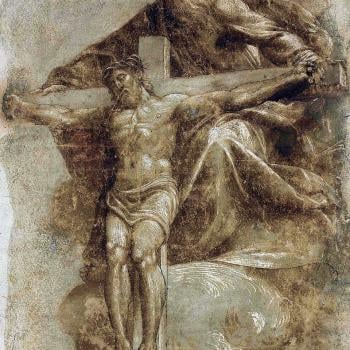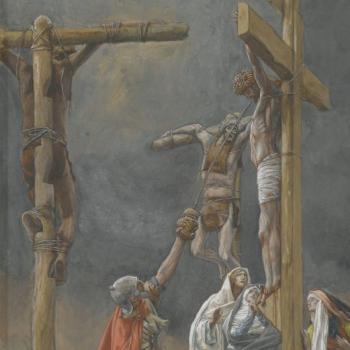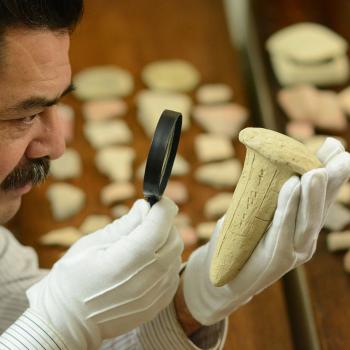Members of my family and I recently visited the central shrines of Shintoism in Ise in Mie Prefecture in Japan. Our gracious hotel host pointed out what he took to be Israel’s Star of David engraved on stone posts as we traveled to the inner shrine, where he introduced us to our official tour guides. Our host knew not why the Star of David-like symbol was engraved on these posts, or where such engravings came from. In addition to witnessing people cleansing themselves with water as they approached the inner shrine, I saw photos and footage of Shinto priests bearing a box with sacred objects in long procession. It reminded me of the Ark of the Covenant. My tour guide and I discussed reports that perhaps at one point in the distant past Jews and Japanese had been in contact with one another.
Whether or not such possible connections were the result of providence or coincidence, I could not help but think of the Hebrew Scriptures, especially when we came to the inner shrine. As with the outer shrine (which we visited the previous day) where food is prepared for the deity Amaterasu Omikami who is worshiped at the inner shrine, I could not take pictures. The pictures shown in this post reveal the closest I could get to capture images. Only high ranking priests and priestesses and members of the imperial family have access to the inner (Naiku) and outer (Geku) shrines at Ise:
Access to both the Naiku and Geku shrines is strictly limited to certain high ranking priests and priestesses and members of the royal family, with the common public allowed to see little more than the thatched roofs of the central structures, hidden behind four tall wooden fences. The High Priest or Priestess of Jingu shrine complex must come from the Japanese Imperial Family, and is responsible for watching over the Shrines.
The guards make sure the rest of us—worshipers and tourists alike—observe proper distance and respect. Many of the Shinto ceremonies performed on the island are veiled in secrecy.
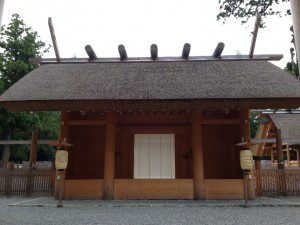
I was struck by how seldom as a Christian I approach God with such reverence in view of the divine mystery revealed in Jesus. Jesus has offered himself as our sacrifice in the Holy of Holies. While Hebrews reveals what Jesus has done in history, one can never comprehend the mystery of his purification of our lives. My time in Ise led me back in time not simply to ancient Shinto symbols and mysterious rites, but also back to the ancient past of the biblical world and upward and forward to the heavenly Jerusalem, which the writer of Hebrews unveils,
18 For you have not come to what may be touched, a blazing fire and darkness and gloom and a tempest 19 and the sound of a trumpet and a voice whose words made the hearers beg that no further messages be spoken to them. 20 For they could not endure the order that was given, “If even a beast touches the mountain, it shall be stoned.” 21 Indeed, so terrifying was the sight that Moses said, “I tremble with fear.” 22 But you have come to Mount Zion and to the city of the living God, the heavenly Jerusalem, and to innumerable angels in festal gathering, 23 and to the assembly of the firstborn who are enrolled in heaven, and to God, the judge of all, and to the spirits of the righteous made perfect, 24 and to Jesus, the mediator of a new covenant, and to the sprinkled blood that speaks a better word than the blood of Abel. 25 See that you do not refuse him who is speaking. For if they did not escape when they refused him who warned them on earth, much less will we escape if we reject him who warns from heaven. 26 At that time his voice shook the earth, but now he has promised, “Yet once more I will shake not only the earth but also the heavens.” 27 This phrase, “Yet once more”, indicates the removal of things that are shaken—that is, things that have been made—in order that the things that cannot be shaken may remain. 28 Therefore let us be grateful for receiving a kingdom that cannot be shaken, and thus let us offer to God acceptable worship, with reverence and awe, 29 for our God is a consuming fire (Hebrews 12: ESV).


